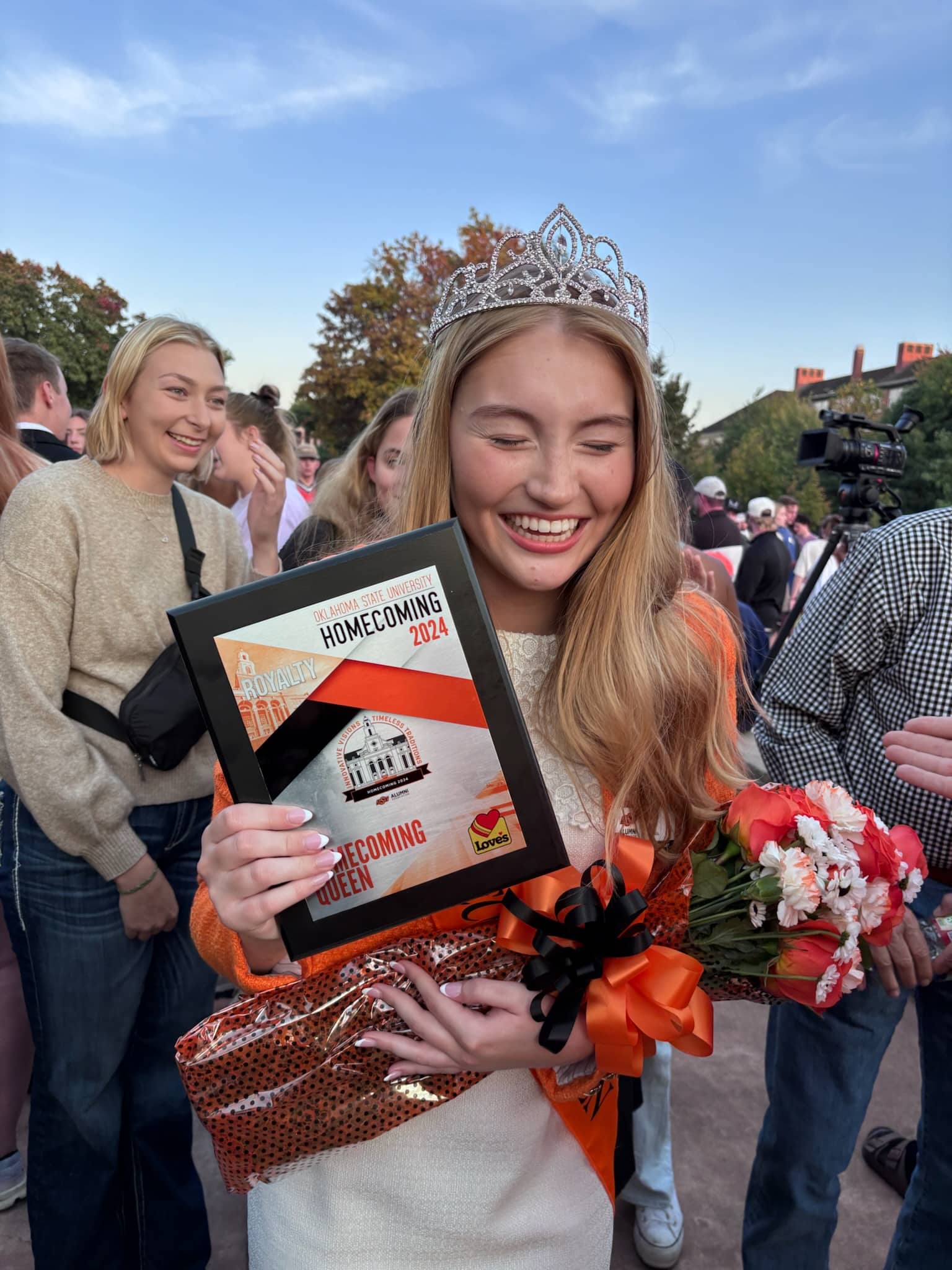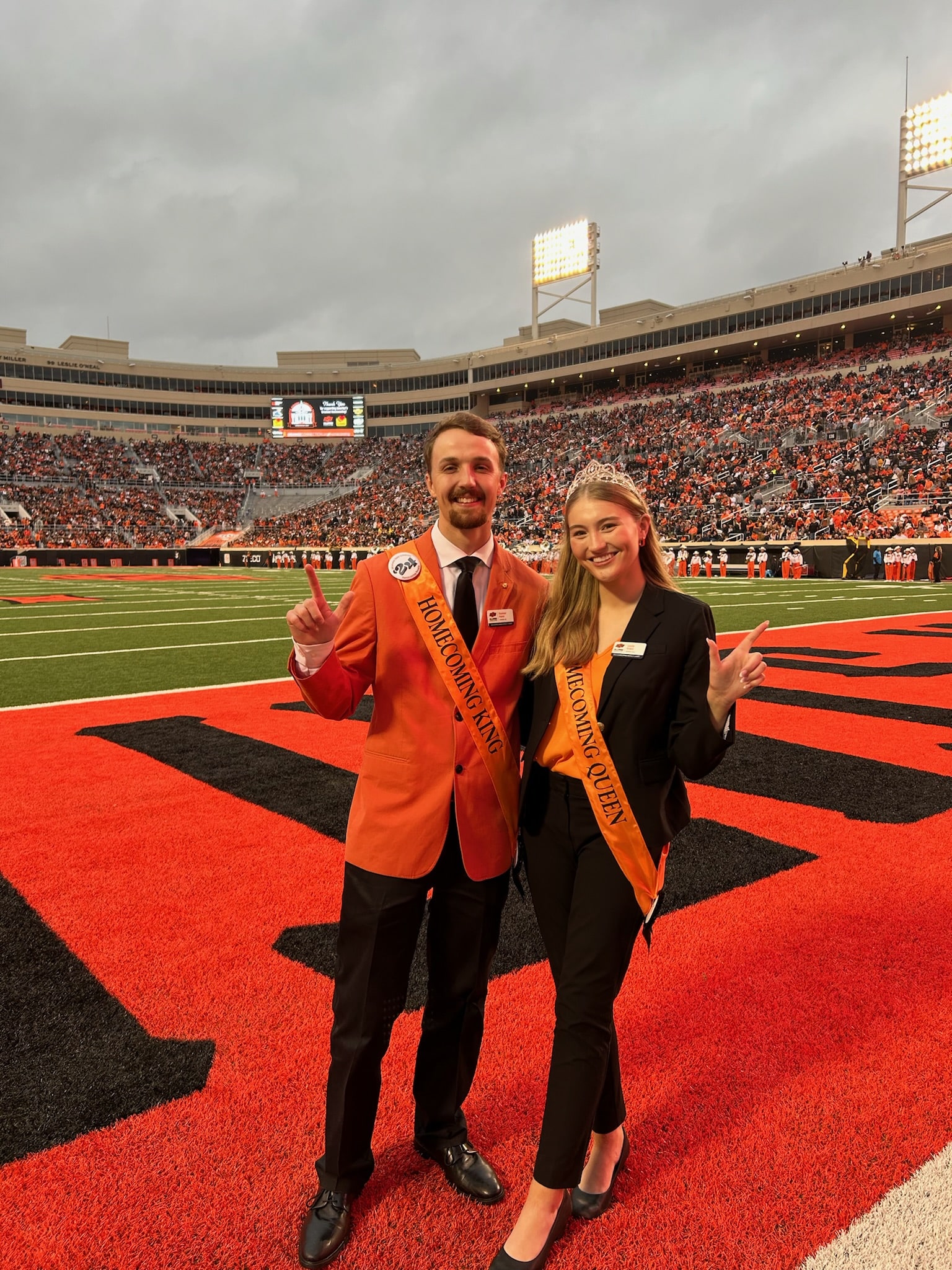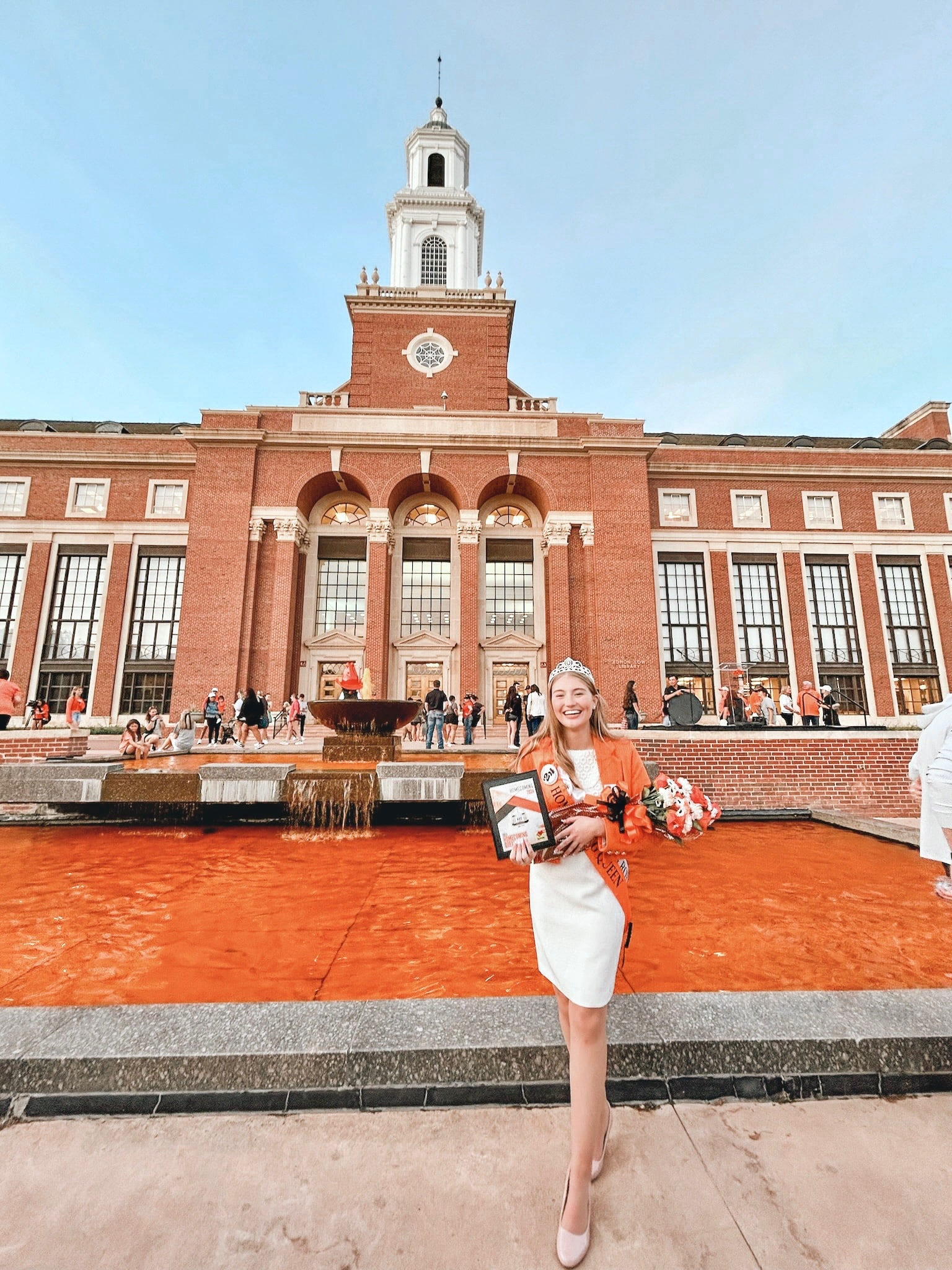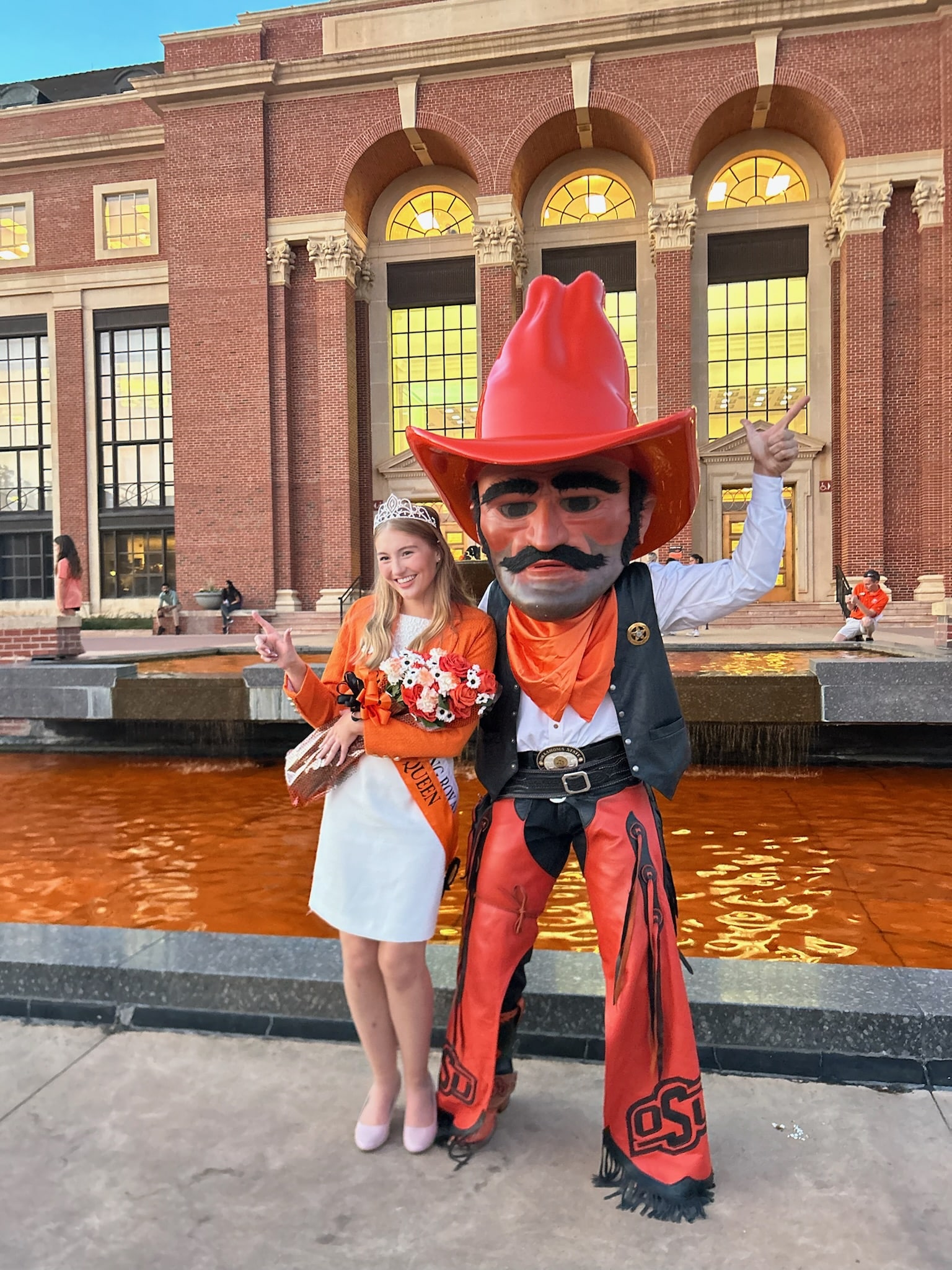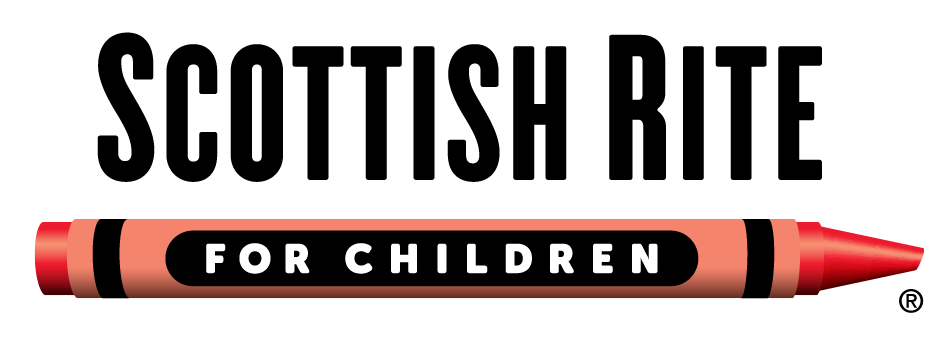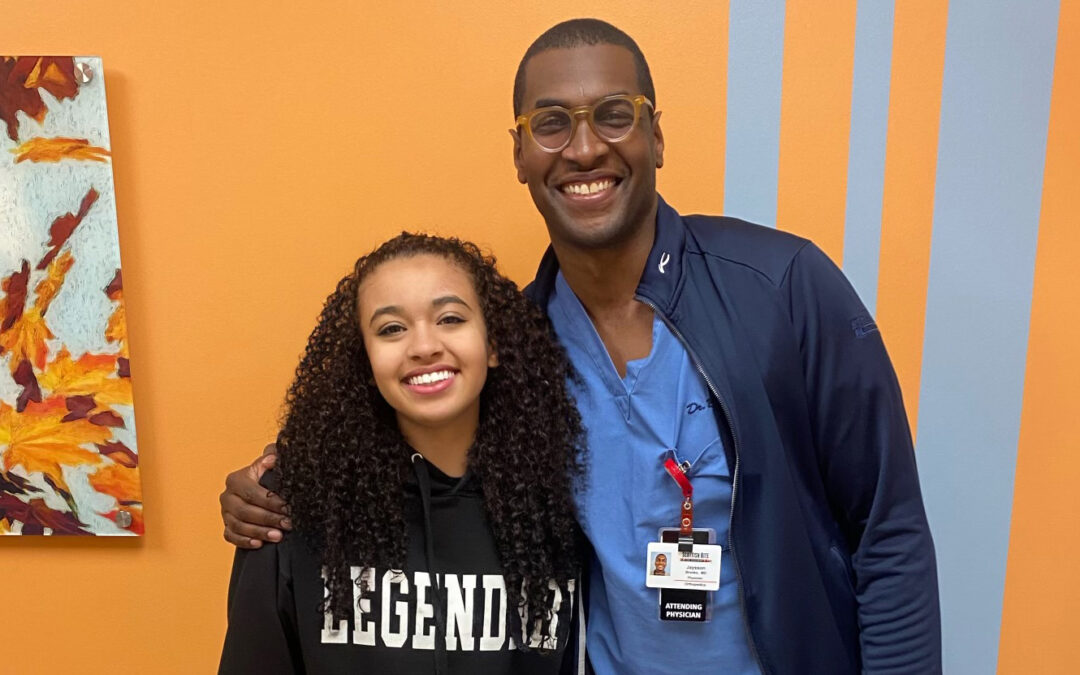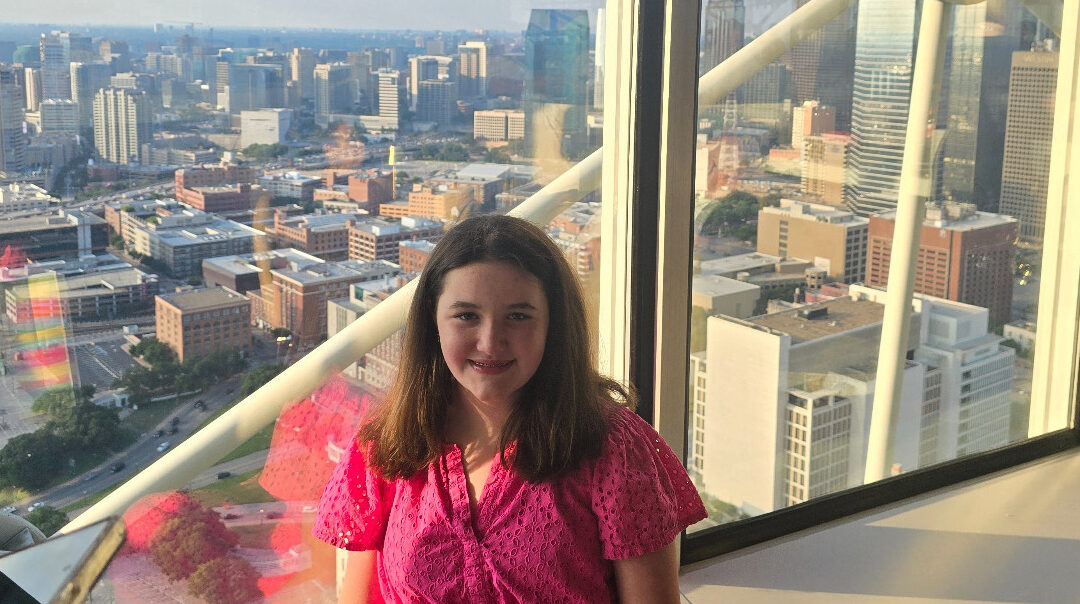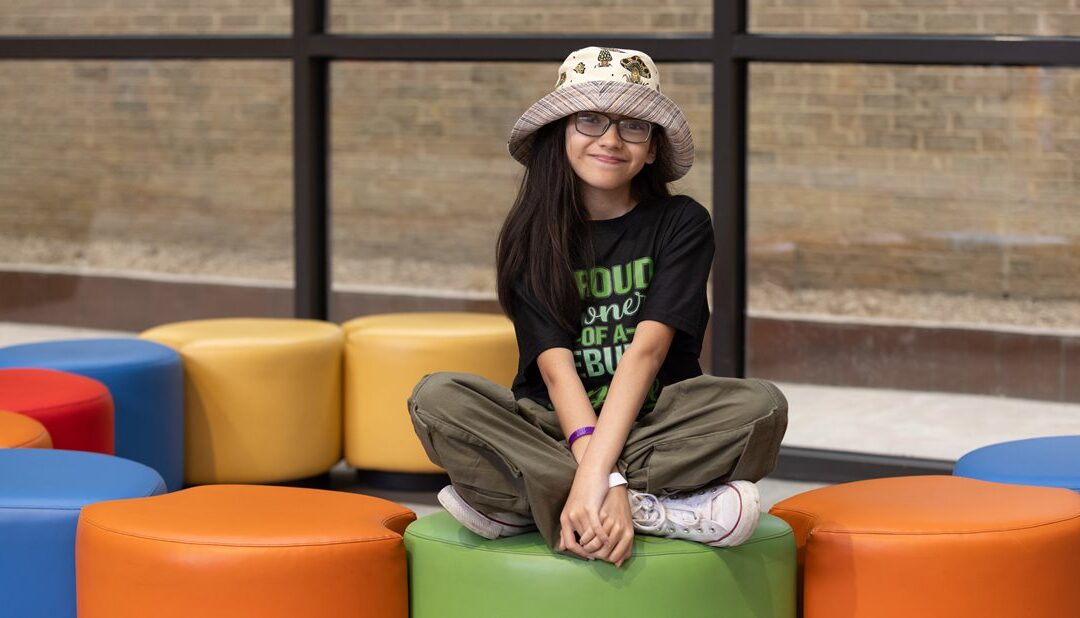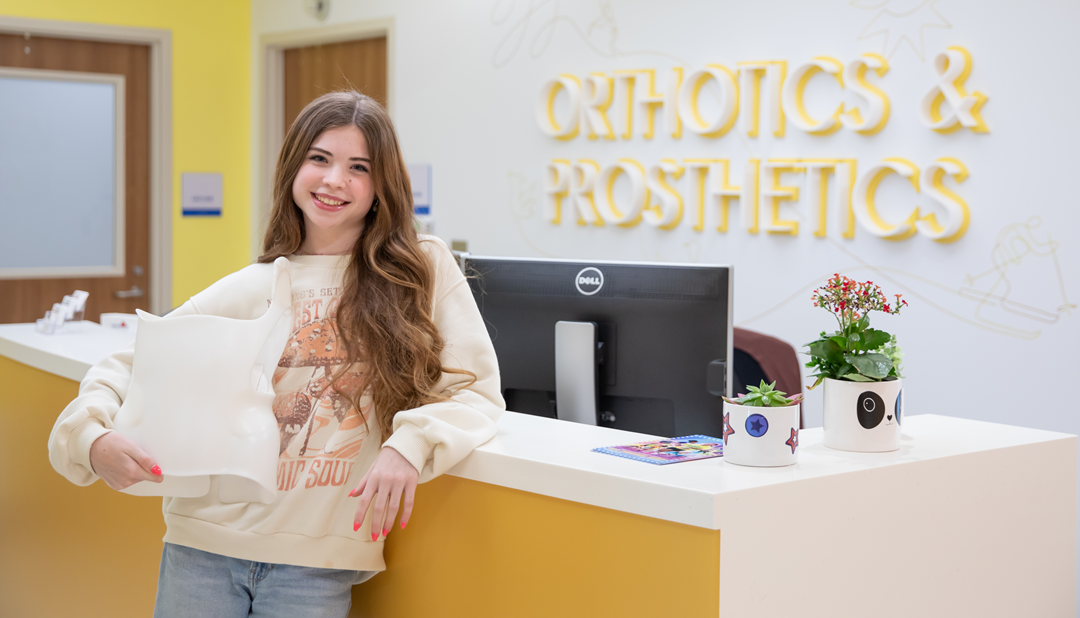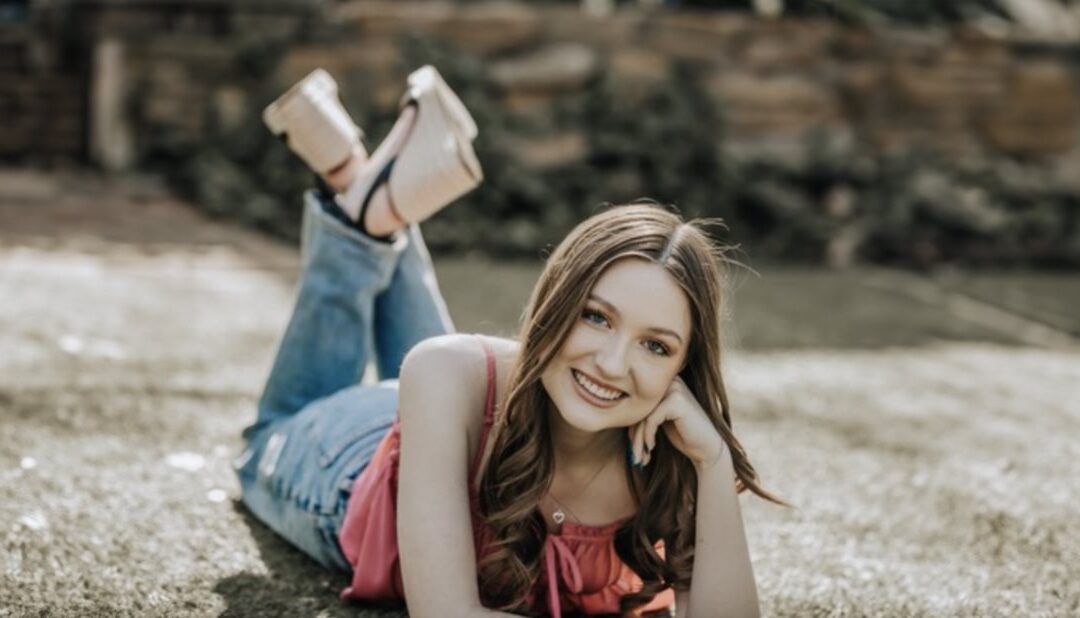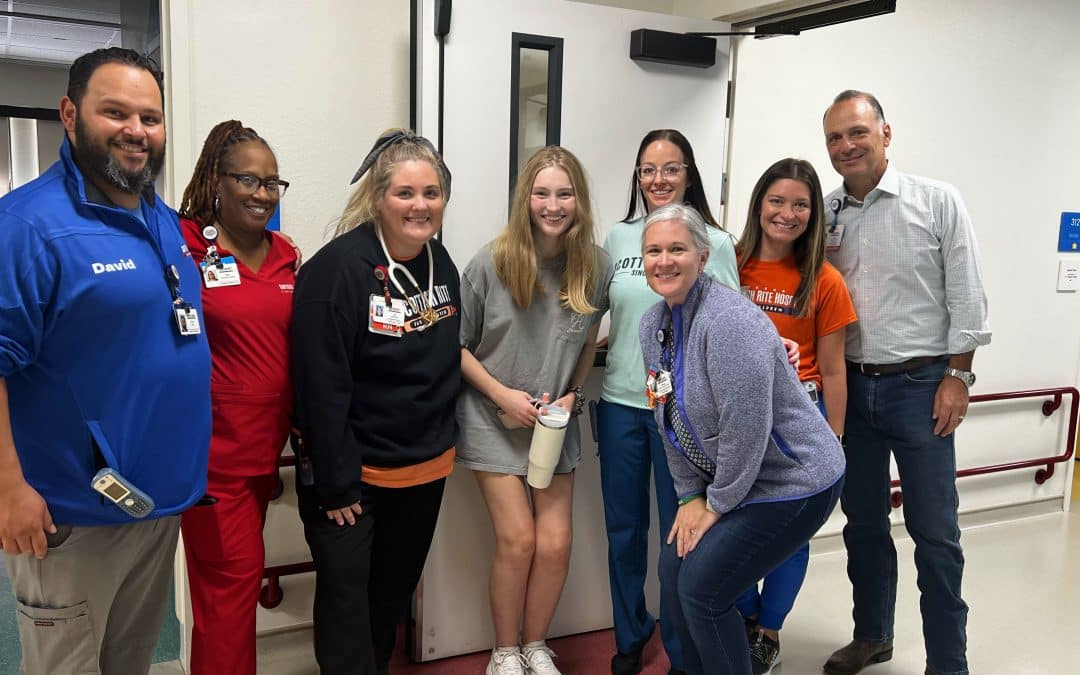
Lexie’s Journey of Unbreakable Bonds and Unstoppable Dreams
At Scottish Rite for Children, every patient’s journey is as unique as they are. Each experience, story and moment shared at Scottish Rite creates an unbreakable bond between the patient and their clinical team. It’s not just about delivering world-class care — it’s about being a vital part of offering children hope that extends far beyond treatment.
21-year-old Lexie spent much of her youth receiving care from a multidisciplinary team of experts at Scottish Rite. At age 13, Lexie was diagnosed by an outside provider with oligoarticular juvenile idiopathic arthritis (JIA), a common condition that causes joint swelling, stiffness and limited movement in children. Oligoarticular JIA affects four joints or less, and, for Lexie, her pain was in her left knee.
Lexie came to Scottish Rite at age 16 to see pediatric rheumatologist Julie M. Fuller, M.D., to alleviate her knee pain. After prescribing her the necessary medication, Lexie saw a major improvement to her once debilitating pain.
“My family had just moved to Oklahoma where there were no pediatric rheumatologists in the area,” says Lexie. “Dr. Fuller was highly recommended by other doctors in the area, and the care I received with Dr. Fuller’s team was unmatched.”
As she began preparing to go to college at Oklahoma State University, Lexie’s routine wellness exam resulted in a diagnosis of scoliosis and put a halt to her daily life.
“To be completely honest, this was a terrifying time in my life of not knowing what the next day would hold in regard to my health,” Lexie says. “I had big aspirations of graduating college with honors and applying to law school, but those dreams were threatened. I just decided to put my health in Dr. Sucato’s hands, and that turned out to be one of the best choices I ever made.”
Chief of Staff Daniel J. Sucato, M.D., M.S., prepared Lexie for surgery to correct the curve in her spine. Together, they coordinated the best time to schedule surgery, with an effort to minimize any disruptions to her school year. Though the recovery process was challenging, Lexie shares that her clinical team made an everlasting impact.
“The team was fully transparent with me and walked me through every step of my journey,” Lexie says. “They have prayed with me, learned my story and inspired me in more ways than they could possibly imagine. The people at Scottish Rite genuinely care.”
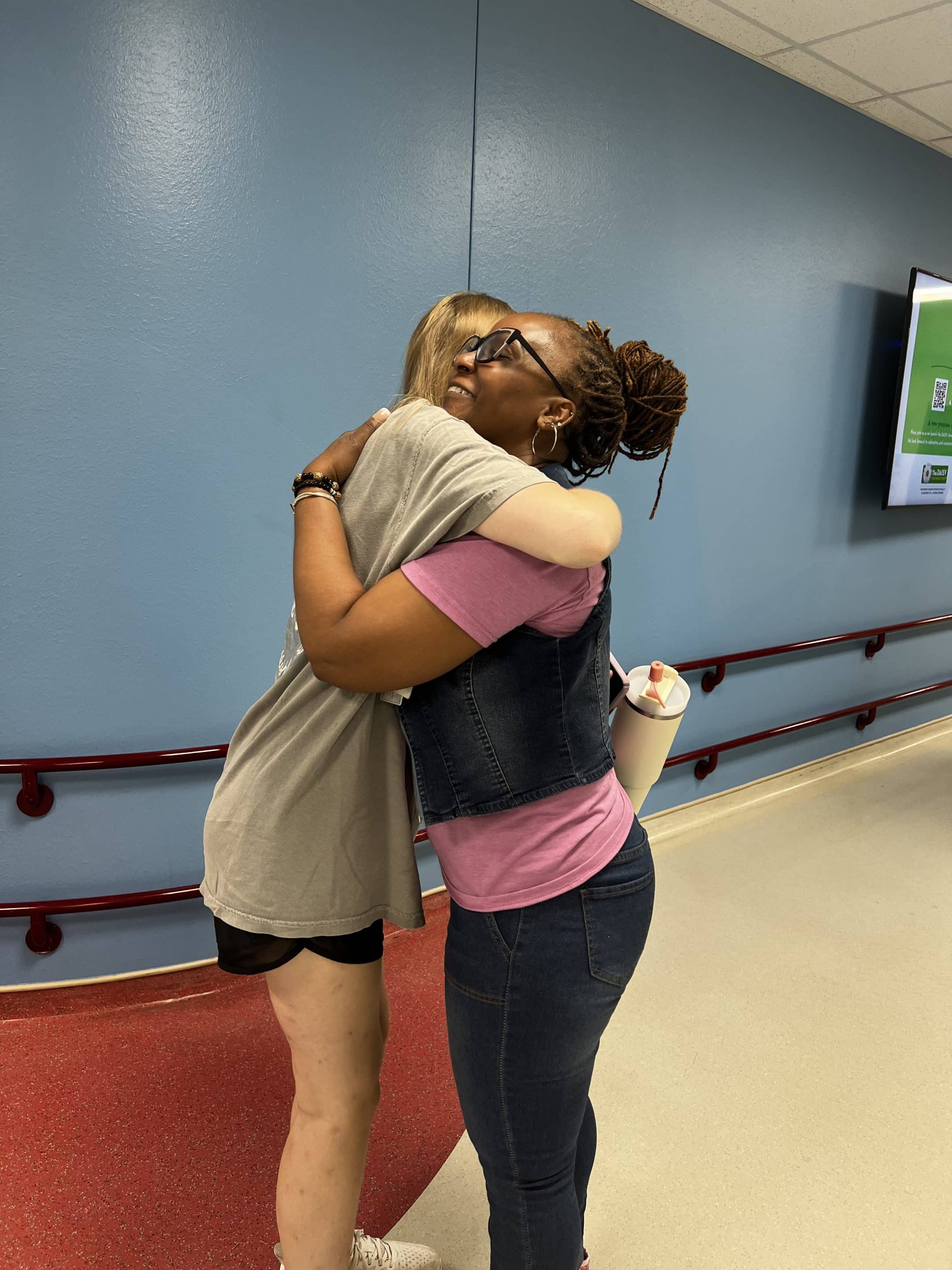
After her treatment, Lexie is focusing on a new chapter in her life. This December, she will graduate summa cum laude from Oklahoma State University and will begin applying to law schools. She also shined as her university’s homecoming queen this year.
“Being surrounded by such a positive care team that cheered me on throughout my journey was such a blessing,” Lexie says. “There’s not a day that goes by where I don’t think about my time at Scottish Rite. Dr. Sucato’s team not only changed my life, but they gave me the chance to go out and live one.”
